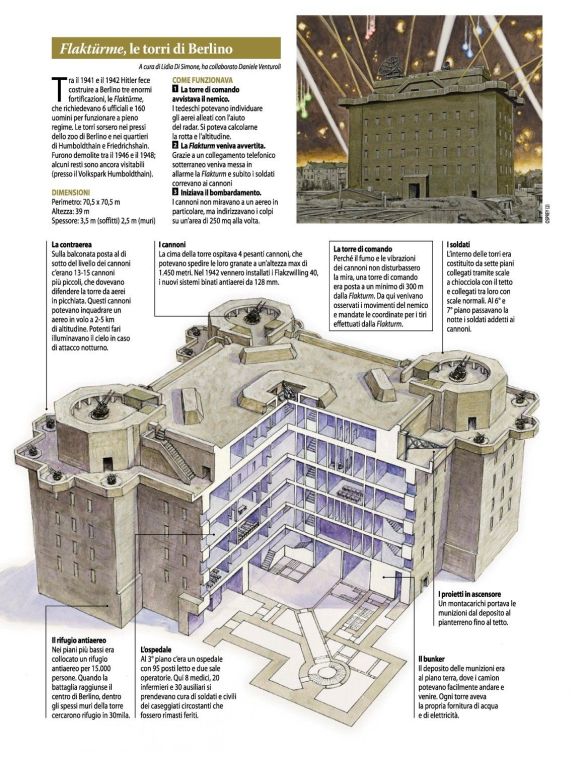The construction of Flaktürme (Flak towers) in major cities began in response to the first bombs falling on Berlin in August 1940. Flak tower complexes consisted of a G-Tower (Gefechtsturm, Combat tower) and an L-Tower (Leitturm, Lead tower). In total eight of these complexes were completed: in Berlin (3), Hamburg (2) and Vienna (3). Another 14 were planned, potentially extending coverage to Bremen and Munich, and increasing the defences in Berlin and Hamburg, but none of these were begun. While the towers in Berlin have been drastically reduced in stature due to post-war demilitarisation, those in Hamburg and Vienna still dominate the cityscapes, standing out against their surroundings. That several of the towers still stand today, and those which have been destroyed required enormous amounts of explosives post-WWII, bears testimony to their amazing strength as air raid shelters. However, their use as armed defences is questionable. Were they actually expensive ‘white elephants’ in that respect? The towers were designed to be architectural landmarks as well as defences – the former requirement eventually absorbing incredible amounts of money at a time when it could have been better spent elsewhere. Hitler wanted them to become monuments resembling medieval castles in peacetime, once his war had been won. He even drew some initial sketches himself. Thus, the towers would fit into his grand plan for Germania and beyond.
As the Soviets entered Berlin, the guns of Flakturm III (Humbolthain) were directed downward with the intention of preventing Red Army tanks from reaching Alexandraplatz. The walls of the towers still bear the pockmarks of returned artillery fire, all of which merely grazed the surface of the reinforced concrete walls. The roof of the G-Tower was 3.5 m thick, not only to resist a direct hit, but also to withstand the recoil force of the 128 mm guns standing above it. It was only after WWII, the tower then standing within the French Sector of Berlin, that attempts were made to blow- up the four-turreted juggernaut as part of the demilitarization. Placing explosives only under the southern turrets, so as to avoid blowing the tower onto the railway lines to the north, two attempts only managed to destroy that half. The force of these explosions can be seen today. Exposed steel strengthening rods within the tower show that the northern half of the tower was shifted a metre northwards but still remained standing sturdily! Flakturm I (the ‘Berlin zoo tower’) was destroyed by the British, but four attempts were needed.
Although designed to hold 15,000 civilians, in addition to the technical equipment and personnel, as many as 30,000 people arrived at Flakturm III during air raids, so it became extremely packed inside. In April 2004, the remaining part of this tower was opened to the public. More than 1,400m3 of rubble has been moved to date, taking over 8,000 hours. Entry to the tower is permitted only by tours guided by the Berlin Underworlds Association, Berliner Unterwelten e. V. Despite safeguarding citizens and treasures (Flakturm I held valuable historic artefacts including the bust of Nefertiti), the crews of the towers scored few direct ‘kills’. For example, Flakturm III apparently only scored 32 aircraft shot down from its completion in April 1942 to the end of the war (though this does not include secondary effects).
